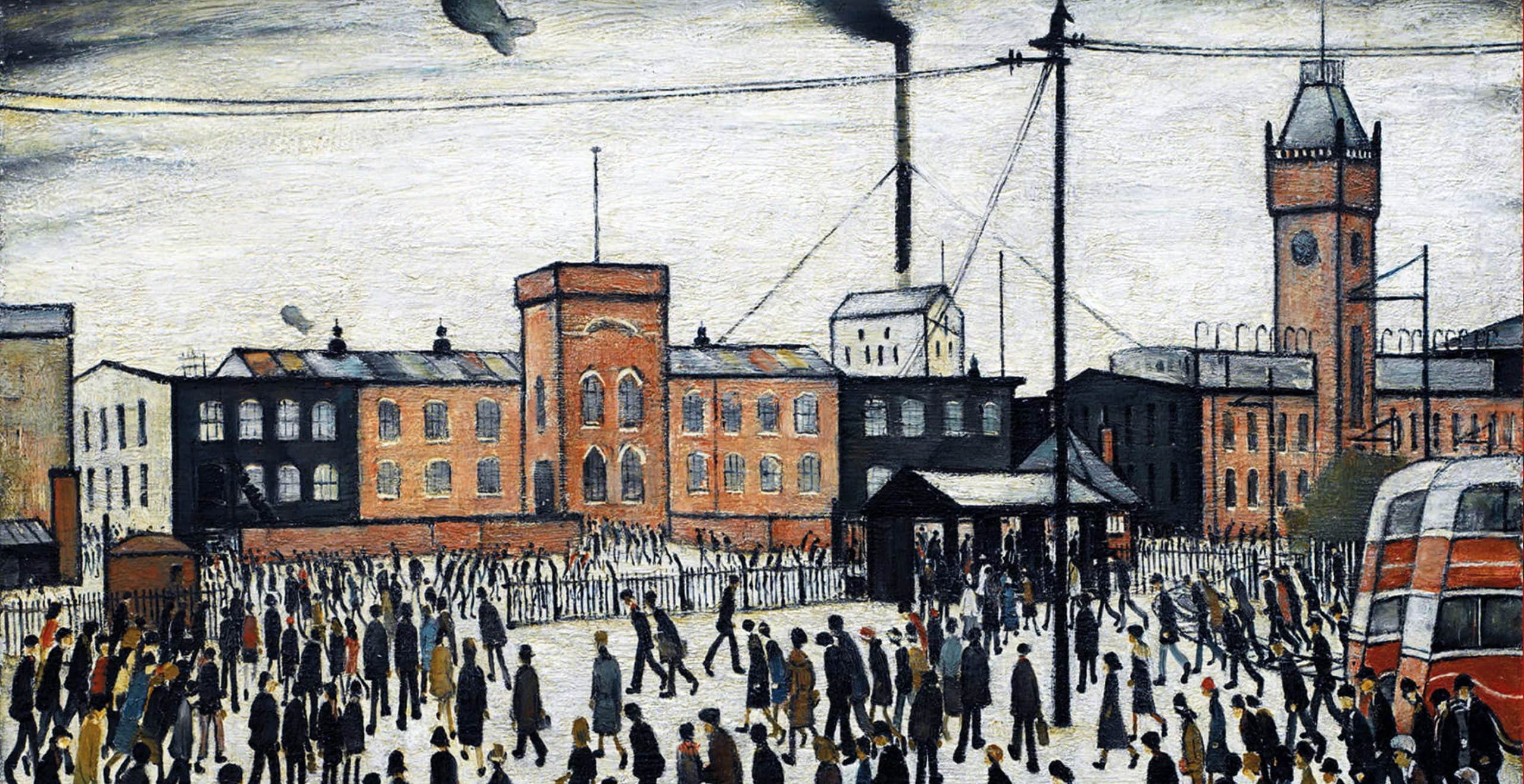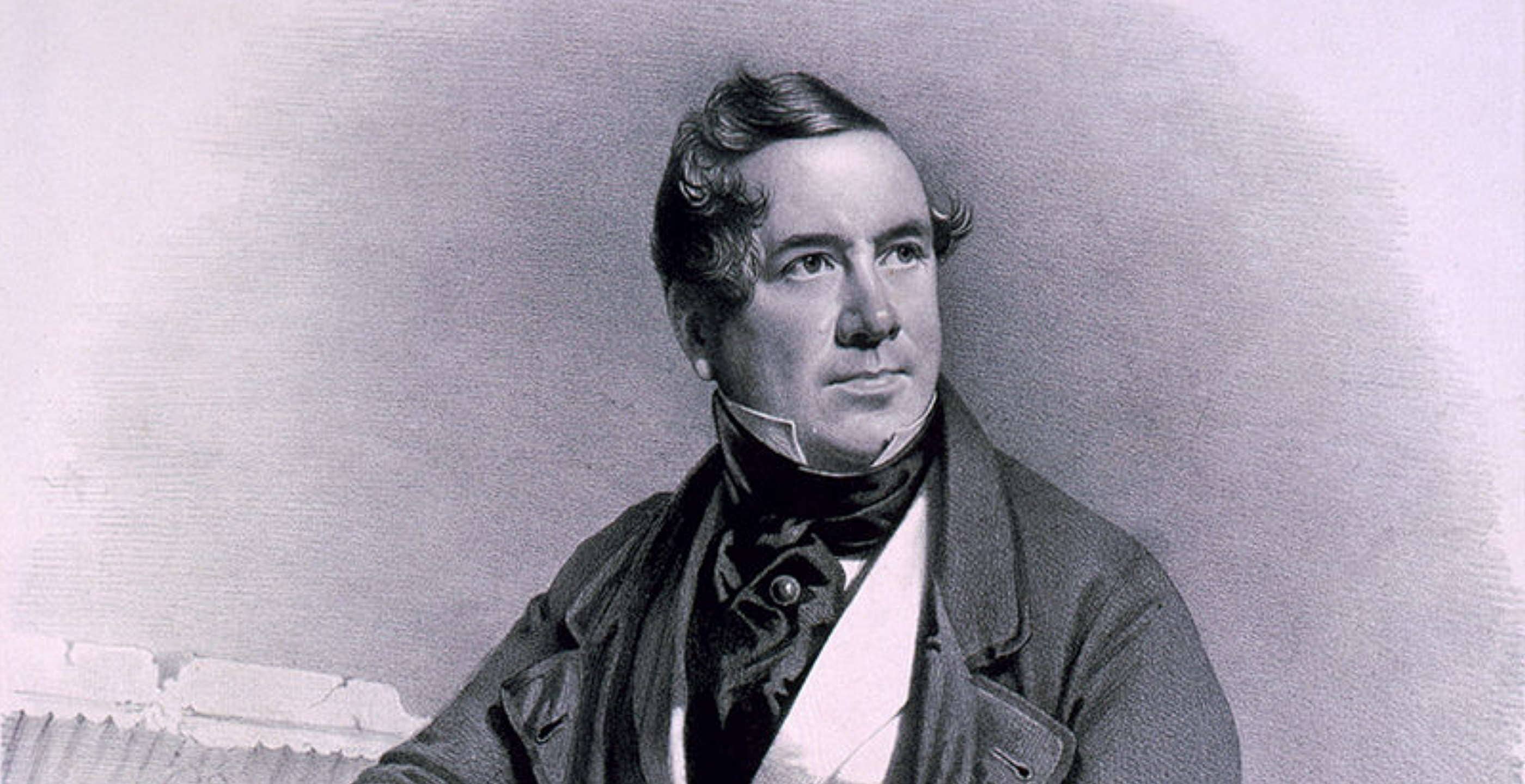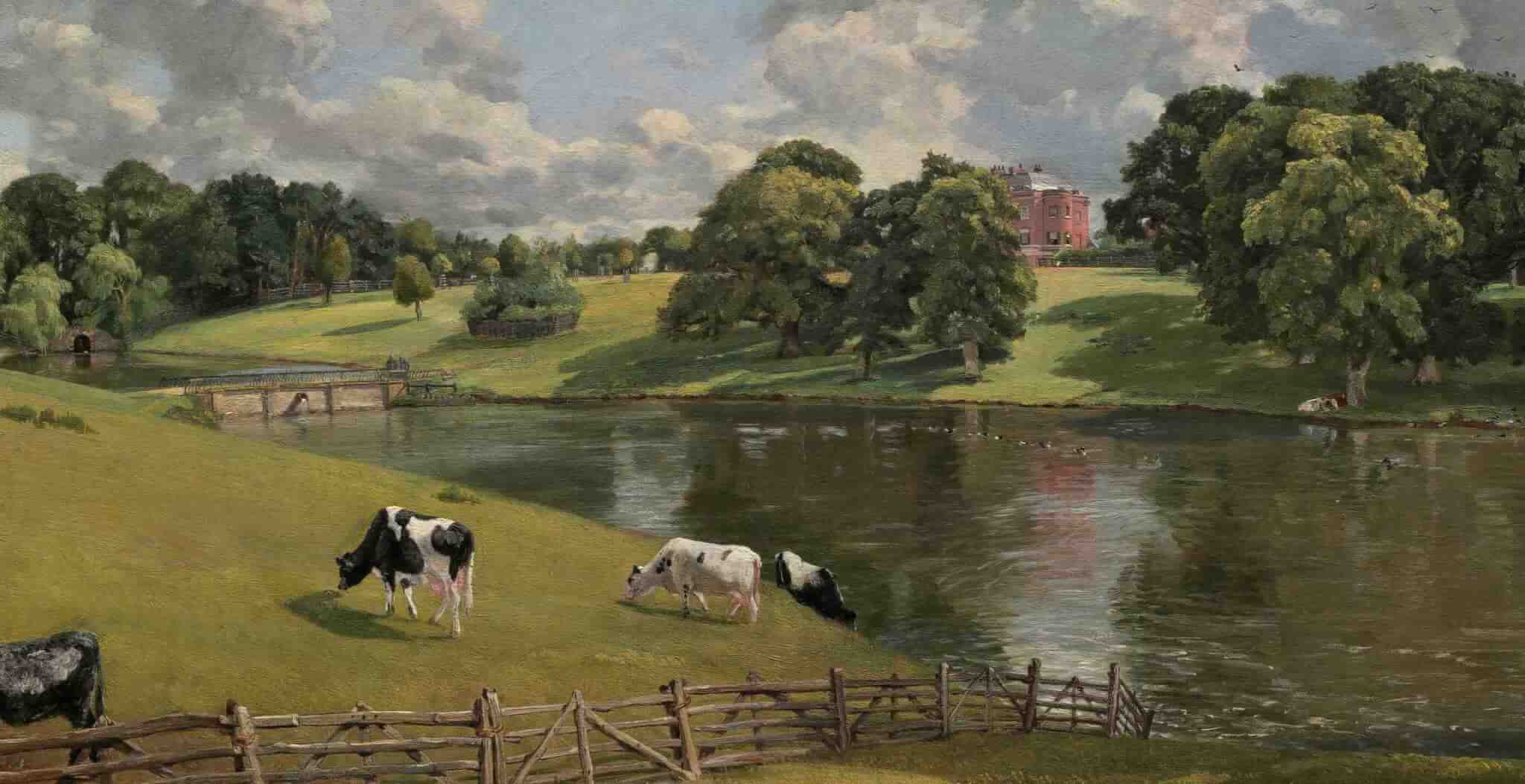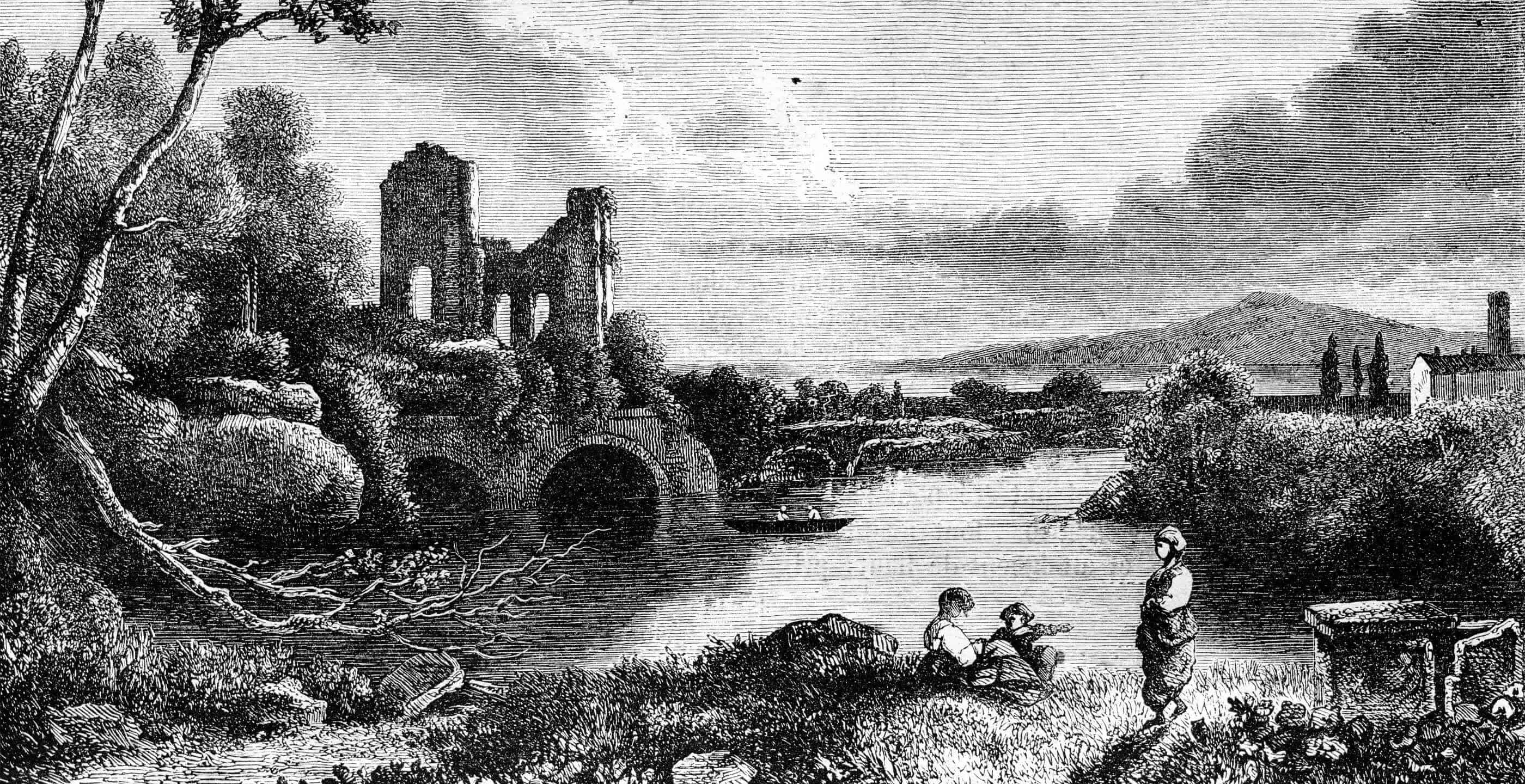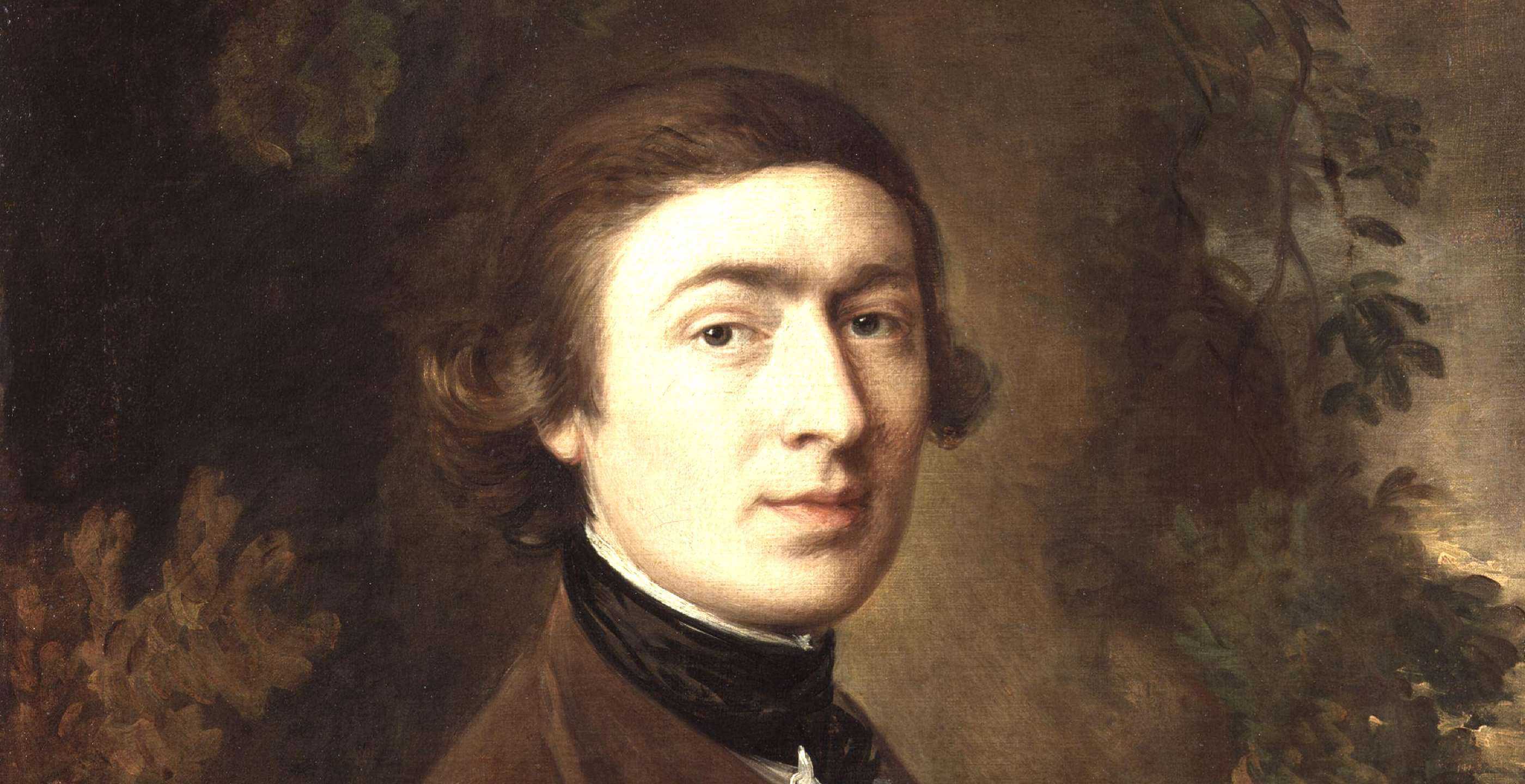Industrial Britain as captured by Laurence Stephen Lowry reflects the austere, dismal, uniform experiences of workers in that period. The dismal aesthetics tell a story of the people, places and economics. For more than forty years of his life Lowry dedicated himself to paintings and drawings representing the industrial heartland in which he lived. Unmarried and childless, Lowry passed away on 23rd February 1976, leaving behind a legacy of art with great historical, social and cultural resonance.
Lowry’s work has earned him a place in British artistic history and much of his work is still on display today, ready to provoke and emote in his characteristically bleak industrial scenes. His work depicts Salford and the area of Lancashire where he lived. Today The Lowry, a gallery and theatre institution at Salford Quays, celebrates his art. The Tate in London also showcases his work.
Lowry managed to create a style all of his own with his infamous “matchstick men”. The urban landscapes that Lowry created were often lugubrious, imposing portrayals of industrial buildings and scattered amongst them were men and women, the human representation of the faceless masses going about their everyday life with the looming structures of the Industrial Revolution ever present in the background.
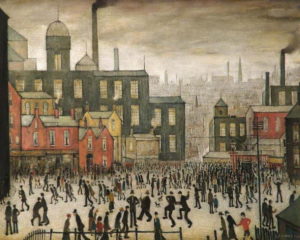
He was born in November 1887 in Stretford, Manchester, the son of Robert Lowry, a quiet unassuming clerk of Northern Irish descent and Elizabeth, who failed to bond well with her son. His mother’s character was said to have been emotionally manipulative of both him and his father, contributing in part to his unhappy childhood.
His youth was unfulfilled both at home and school. He did not show any particular aptitude or brilliance in academic study and did not have many friends. Whilst he was a young man he and his family moved to the industrial town of Pendlebury, the source of much of his artistic inspiration. It was by chance that he ended up in this location, forced to move due to financial restraints.
Lowry is said to have detested the place when he first moved there, however on one mundane occasion whilst waiting at the station, he viewed the scene in front of him with fresh eyes. As he stood in his usual spot waiting for the next train, he looked up at the Acme Spinning Mill, studying it with new artistic interpretation. This was a turning point for young Lowry.
After he left school he became a rent collector at the Pall Mall Company. He used his free time, in the evening or a spare hour at lunch, to take lessons in freehand drawing in order to hone his craft. By 1905 he had secured a place at the Manchester School of Art.
He was lucky enough to study under the tutelage of the French Impressionist Pierre Adolph Valette which according to Lowry himself had an enormous impact on him as a young man. He allowed him to enter a new world with information and artistic ideals brought over from Paris, a far cry from Lowry’s childhood.
In 1915 his studies took him to Salford to the Royal Technical Institute where he would learn and develop as an artist for a further ten years. During this time, his focus on industrial urban landscapes allowed him to amass his own portfolio which gained a distinctive style and artistic approach.
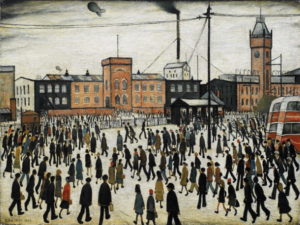
Initially this style involved typical oil paintings using dark and sombre tones but soon evolved and changed with the influence of D.B Taylor who encouraged him to experiment with a different palette. Using this advice Lowry began to create his urban depictions with a much lighter background colour, giving a light behind the buildings and his characteristic “matchstick men”.
Lowry fully embraced this lighter palette although once he found his style he never strayed from using just five main colours in his work. His colour range and style was not typical of the Impressionism that was fashionable at the time. He did however dedicate himself to urban landscapes; despite having other jobs and trades during his life, art would remain his passion.
Sometimes labelled a “Sunday painter”, his lack of formal full-time artistic status did not dampen his spirit and love of his craft, often painting during any free moment in the evenings or after work. He was “a Sunday painter every day of the week”, as he himself explained.
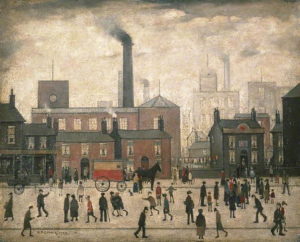
Despite not working full-time as an artist he soon gained recognition for his work. One of his most famous creations, now housed at Salford Quays is called “Coming from the Mill”, created in 1930. This is a great example of his style and form as an artist, using an industrial setting. The characteristic mill with its harsh lines forms an imposing backdrop to the rest of the painting. In the foreground are his men and women characteristically uniform in their appearance.
Lowry is able to capture the monotony of a lifestyle, of a place and a time, a theme replicated in many of his other paintings including, “Going to Work” housed at the Imperial War Museum. Lowry’s famous style of urban landscapes, uniform figures and dismal backdrops slightly changed after the Second World War. Previously the darkness and grim reality of his paintings could be attributed to his unfortunate circumstances at home which included the death of his father and the ongoing illness of his mother. As with many artists his mood was reflected in his work.
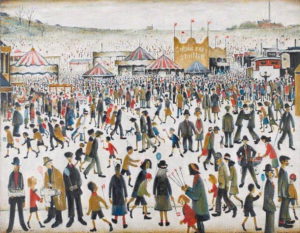
After the dire circumstances of World War Two however his style evolved to depict more lighthearted scenes such as “Fun Fair at Daisy Nook”, with his matchstick figures conveying a new scene of the urban dwellers day out.
His style was still ultimately recognisable for its cartoon like figures. His less well known work in fact included portraits and landscapes, including a self-portrait from 1925, showing his flair and scope as an artist. In fact his personal taste in art favoured the likes of the Pre-Raphaelites, especially the work of Dante Gabriel Rossetti. His admiration of his work even led him to amass a considerable collection by Rossetti and start a society in appreciation of his work. Whilst never a full-time artist, Lowry’s passion for art in various forms was evident.
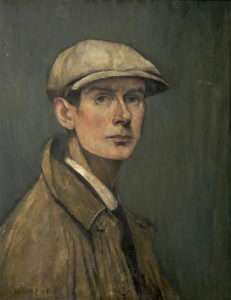
His professional career continued to flourish and by 1939 he had a solo exhibit in Mayfair and in later life became a tutor at the Slade School of Fine Art which was an impressive and exclusive institution. The appreciation of his work won him attention and plaudits, so much so that in 1968 he was offered a knighthood which he quickly turned down, explaining to Harold Wilson his dislike of social distinctions.
Lowry earned great admiration and distinction as an artist in his own right and in 1976 when he passed away, he left behind a great selection of work displayed in museums and galleries across the country. His work and style was different, his depictions of urban landscapes distinct and his matchstick men a revolutionary style all of his own.
Jessica Brain is a freelance writer specialising in history. Based in Kent and a lover of all things historical.
